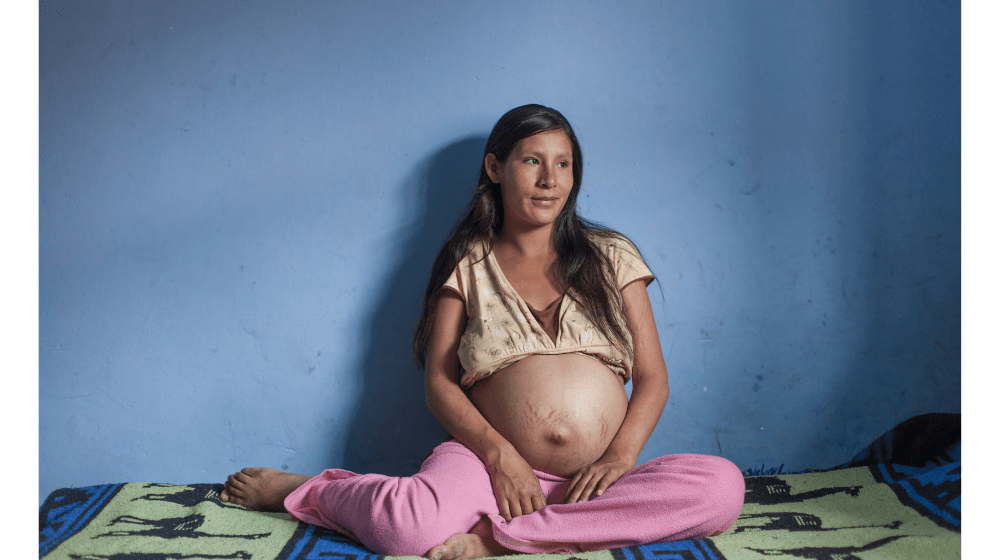New data show major setbacks for maternal health in many parts of the world, highlighting stark disparities in healthcare access
Every two minutes, a woman dies during pregnancy or childbirth, according to the latest estimates released in a report by United Nations agencies today. This report, Trends in maternal mortality, reveals alarming setbacks for women’s health over recent years, as maternal deaths either increased or stagnated in nearly all regions of the world.
The report, which tracks maternal deaths nationally, regionally and globally from 2000 to 2020, shows there were an estimated 287 000 maternal deaths worldwide in 2020. This marks only a slight decrease from 309 000 in 2016 when the Sustainable Development Goals (SDGs) came into effect. While the report presents some significant progress in reducing maternal deaths between 2000 and 2015, gains largely stalled, or in some cases even reversed, after 2015.

"It is unacceptable that so many women continue to die needlessly in pregnancy and childbirth. Over 280,000 fatalities in a single year is unconscionable,” said UNFPA Executive Director Dr. Natalia Kanem. “We can and must do better by urgently investing in family planning and filling the global shortage of 900,000 midwives so that every woman can get the lifesaving care she needs. We have the tools, knowledge and resources to end preventable maternal deaths; what we need now is the political will."
Severe bleeding, high blood pressure, pregnancy-related infections, complications from unsafe abortion, and underlying conditions that can be aggravated by pregnancy (such as HIV/AIDS and malaria) are the leading causes of maternal deaths. These are all largely preventable and treatable with access to high-quality and respectful healthcare.
Community-centered primary health care can meet the needs of women and enable equitable access to critical services such as assisted births and pre- and postnatal care, childhood vaccinations, nutrition and family planning. However, underfunding of primary health care systems, a lack of trained health care workers, and weak supply chains for medical products are threatening progress.
Roughly a third of women do not have even four of a recommended eight antenatal checks or receive essential postnatal care, while some 270 million women lack access to modern family planning methods.
Exercising control over their reproductive health – particularly decisions about when to have children – is critical to ensure that women can plan and space childbearing and protect their health. Inequities related to income, education, race or ethnicity further increase risks for marginalized pregnant women, who have the least access to essential maternity care but are most likely to experience underlying health problems in pregnancy.
The report reveals that the world must significantly accelerate progress to meet global targets for reducing maternal deaths, or else risk the lives of over 1 million more women by 2030.

Maternal mortality in Peru
In 2019, Peru had registered its lowest number of maternal deaths with 302 deaths. During the COVID-19 pandemic, maternal deaths increased to 439 in 2020, and to 493 in 2021, according to MINSA epidemiological surveillance records. During those two years, the spread of COVID-19 was involved in the majority of maternal deaths, more than hemorrhage and hypertensive disorders. As of the second semester of 2021, the number of deaths began to decrease once pregnant women were included as a priority population to receive the vaccine. This, together with the intensification of efforts by health personnel and other relevant actors, allowed 291 maternal deaths to be registered in 2022. If this data is consolidated, 2022 would be the year with the lowest number of maternal deaths in the history of Peru, which would result in an estimate of the Maternal Mortality Ratio of 60 maternal deaths per hundred thousand live births -almost double the goal of the Goal of Sustainable Development 3 established for the year 2030.
Maternal mortality is affected by the deep inequalities that the country faces at the territorial level and by population group. The areas with the highest levels of maternal mortality are the Northeast and the South Andean, as well as rural areas, where there is greater inequity in access to services, higher poverty rates, and less participation of women in the processes. decision-making on aspects that are significantly related, such as their sexual and reproductive health. On the other hand, the direct relationship between a low prevalence of use of modern contraceptive methods and high maternal mortality is notorious, as in the cases of Amazonas, Ucayali, Madre de Dios, Piura and Huánuco. In order for the country to advance in the reduction of avoidable maternal mortality, it is necessary to ensure the formulation and implementation of plans and strategies based on territorial and intersectional evidence: multisectoral and intergovernmental articulation with a gender approach and intercultural relevance, the involvement activity of local governments, the role of duly conditioned community health promoters and agents, and the work in brigades that reach the most backward populations are some of the proven evidence that ensuring that no woman dies in the process of giving life.


